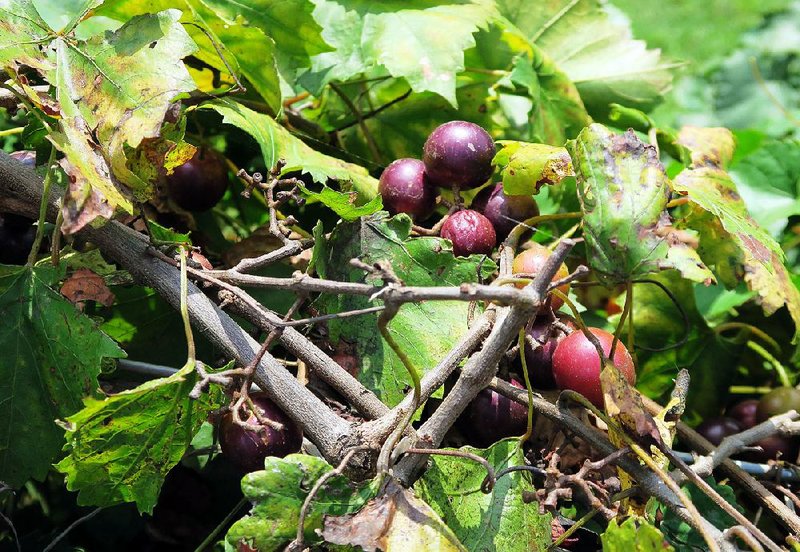SEPTEMBER
We have had a taste of autumnal weather, so we know fall is on the horizon. While we are probably not done with heat, we really were lucky this summer. We had milder than normal temperatures and more rain than normal. Some plants thrived while others have struggled a bit. It is time to take stock of your garden, figure out what worked and what didn't and, with annuals and vegetables, begin to replant for fall and winter.
• Leaf-spot diseases and mildew have been a common problem on many plants late in the season. I doubt you will find many hydrangeas without a spot here and there, or peonies that aren't dying back, or dogwoods without some spotted leaves. Don't worry and don't start spraying.
• It is time to clean up, water when dry and prepare for dormancy.
• Any perennials that have started dying back or have dead or diseased leaves can be cut back now. That includes peonies, lilies and bleeding heart. Once the leaves begin to decline, their season is over and they will be fine until they reappear next spring.
• Trees and shrubs with damaged foliage should be monitored for leaf fall. Once that begins, rake up, clean up and plan to start fresh next spring. Don't prune trees and shrubs now, especially spring bloomers, as they have set their flower buds for next spring.
• Fall color is arriving at nurseries and garden centers statewide. If your garden needs some quick color you can plant warm-season plants such as ornamental peppers and marigolds that will survive until a frost and give you great fall color; and you can replant petunias and callibrachoa, which will tolerate warm weather and several light freezes.
• Dianthus, ornamental kale and cabbage -- along with the edible ornamental Swiss chard, purple mustard and edible kale -- can all be planted now.
• Violas will tolerate more swings in temperatures than pansies, so consider adding a few as the temps go down. Hold off on pansies until the hot weather is gone. They get leggy quickly if exposed to much heat. Make sure you don't forget to water.
• Fall perennials include mums and asters, which many gardeners grow as annuals. We are also seeing good color on Chelone (turtlehead), Tricyrtis (toad lily) and Japanese anemones. Goldenrod is blooming, and salvias are kicking into high gear. We are beginning to see good plumes on ornamental grasses. Pumpkins and gourds are also popping up, and fall bulbs are beginning to make an appearance.
• You can buy your spring-blooming bulbs now, but let the nights cool off a bit before planting. Large, firm bulbs will give you the best display next spring. If you have room in your refrigerator, you can chill the bulbs before planting, but that isn't a requirement.
• Some had better success than others in the summer vegetable garden, but many plants are tired. If you can find transplants, replant some tomatoes and peppers for fall. You can also begin to plant cabbage, broccoli, greens, lettuce and radishes.
• Eggplant and peppers are still producing pretty well in most gardens, so continue to harvest and enjoy as long as they last.
• Mulch any new plantings and do water. With just a little bit of protection, we can produce edibles year-round in a home garden.
PLANT OF THE MONTH
Muscadines are one of the easiest of the fruit crops to grow in Arkansas. These wild grapes are native to almost all parts of the state except the most northern counties.
They can be eaten fresh or made into juice, jelly or wine.
They grow best where they have full sunlight and a well-drained soil. They need some type of trellis, arbor or fence to climb on. They will grow up a tree, but production will not be good, as shade can be a limiting factor.
In the wild, separate muscadine vines produce male or female flowers, with both plants needed for fruit. Today, cultivated varieties are self-fruitful, meaning the plants have perfect flowers, containing male and female parts.
For self-fruitful black varieties try "Cowart," "Nesbitt" and "Noble"; for bronze-fruited varieties plant "Taro," "Granny Val" and "Carlos."
If you still prefer the old-fashioned female, varieties such as "Supreme," "Black Beauty," "Summit" and "Fry" are available. The female plants will need the help of a male plant -- or one of the perfect varieties. If you have at least one vine of a perfect-flowered variety, it can pollinate eight surrounding female plants.
Muscadines don't need as much pruning as a table grape, nor do they have many diseases or insect problems. They can be an acquired taste because the seeds are large, but I do love to eat them.
Janet B. Carson is a horticulture specialist for the University of Arkansas Cooperative Extension Service.
HomeStyle on 09/02/2017
